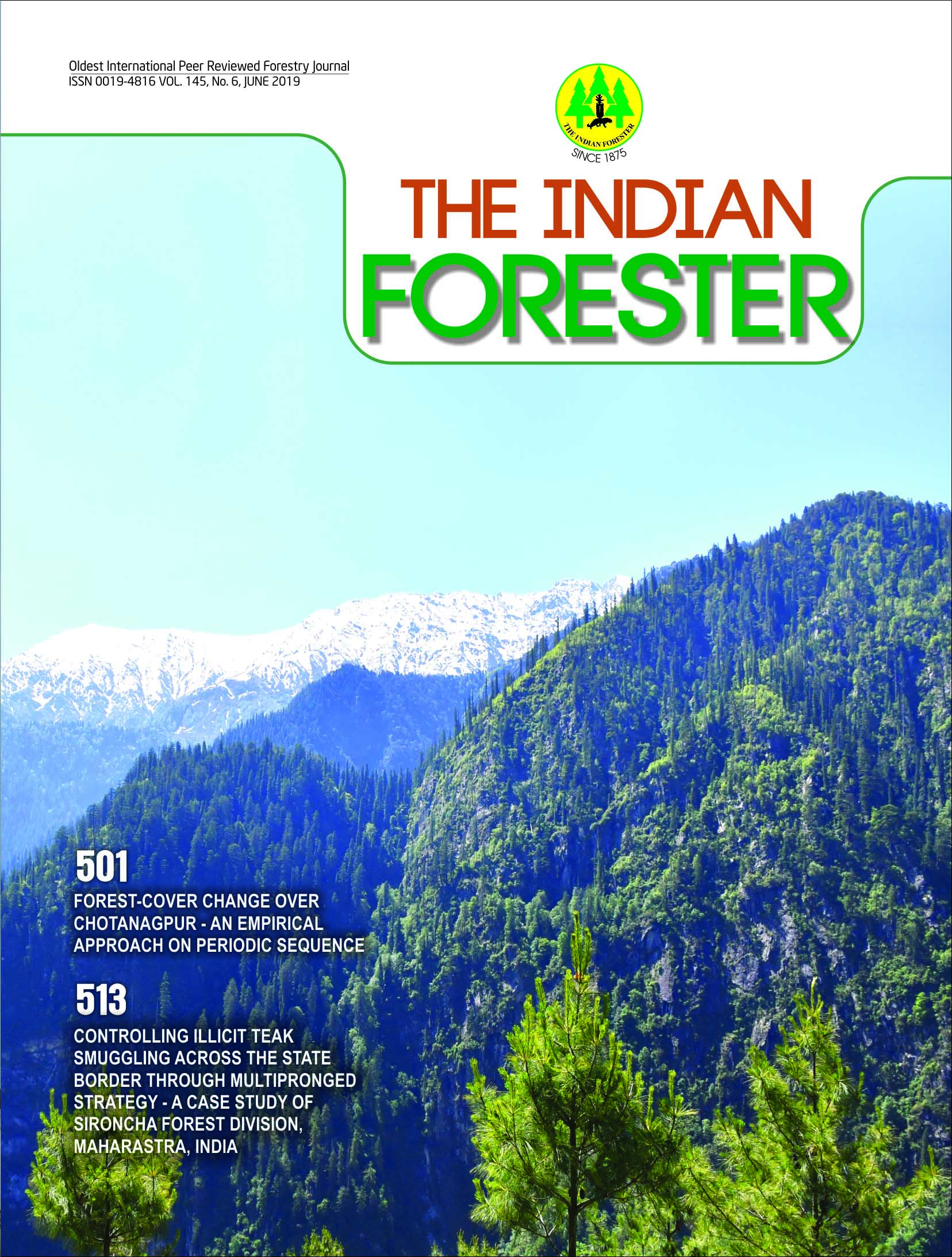Forest-Cover Change Over Chotanagpur - An Empirical Approach on Periodic Sequence
DOI:
https://doi.org/10.36808/if/2019/v145i6/146193Keywords:
Chotanagpur Plateau/Plateaux, Periodic-Spans/Ends, Forest-Cover, Satellite Image(s), Principal Component Analysis, Supervised Classification, FSI (Forest Survey of India), ISFR (India State of Forest Report), ANOVA (Analysis of Variance), LS (level of Significance), LSD (Least Significant Difference).Abstract
Chotanagpur, like any other terrain, has been an area of special interest for the forestry and forest management at large. Present study is an attempt to ascertain and analyze (i) the wide-scale variations in the district-level forest-cover (FC) that exists here (ii) trends of such changes occurring in each of the eighteen districts, this plateau is composed of, in the last almost three decades. It is a study conducted over the two successive periodic-spans (1989-2010 and 2010-17), involving three periodic-ends (viz. 1989, 2010 and 2017). Bi-sectional forest classification, based on its crown-density (≥40% being taken as dense and ≤40% as open), has been adopted in forest-cover assessment.
Grossly, the open forest-cover (OFC) has found to remain at 17% all through. The dense one (DFC) was reduced by 2% during the first periodicspan (from 18% in 1989 to 16% in 2010), only to regain its 18% level during the second. Thus the cumulative total forest-cover (TFC) was maintained at 35% in both 1989 and 2017, with a drop of 2% in 2010 to 33%.
At district-level, however, variations had a wide range for TFC being as high as 59% in Chatra (with 53% DFC and merely 6% OFC) at the one hand and as meagre as only 8% in Dhanbad (with 3% DFC and 5% OFC) at the other, in 2017. Two classes and four categories of districts have emerged while scrutinizing the trends of changes bearing certain distinguished sets of characteristics and distinct forest-density features.
The results largely match, at the aggregate level, with the contemporary ISFRs of FSI.
ANOVA table for the percentage forest-cover area2 shows highly significant variation due to Districts. Sequels to the same, their district-wise mean values have also been derived. When they are compared to the corresponding LSD, the districts are seen forming three groups for TFC–first having the higher mean percent area of forest coverage, second having the lower mean percent area of forest coverage and third having the mid-range mean percent area of forest coverage. Latehar, Chatra and Khunti fall in the first group and Giridih and Dhanbad in the second group, while all the remaining districts are to be put into the third group.
References
Ahmad E. (1965). Bihar: Physical, Economic, Regional Geography, Ranchi University Press, Ranchi: pp. 23
Anon (1991). India State of Forest Report 1991, Forest Survey of India, Dehradun: pp. 45-63
Anon (2011). India State of Forest Report, Forest Survey of India, Dehradun: pp. 148-152
Anon (2017). India State of Forest Report, Forest Survey of India, Dehradun: pp. 206-211
Bliss C. I. (1958). Periodic Regression in Biology and Climatology, Bulletin 615, The Connecticut Agricultural Experiment Station, New Haven, USA
Census of India (2011), Primary Census Abstract, censusofindia.gov.in
Champion H.G. and Seth S.K. (1968). A Revised Survey of Forests' Types of India, Natraj Publishers, Dehradun: pp. 45
Fisher Sir Ronald A. (1925). Methods for Research Workers, Oliver and Boyd, UK. Chapter VII
Fisher Sir Ronald A. (1935). Design of Experiments, Oliver and Boyd, UK.
Press Information Bureau, Min. of Home Affairs, Govt. of India (2016). LWE affected Districts, February 24th, 2016
Times of India (2018). Centre removes 44 districts from list of Maoist-hit areas, April 24th, 2018
Downloads
Downloads
Published
How to Cite
Issue
Section
License
Unless otherwise stated, copyright or similar rights in all materials presented on the site, including graphical images, are owned by Indian Forester.





